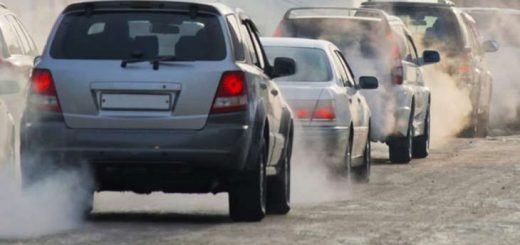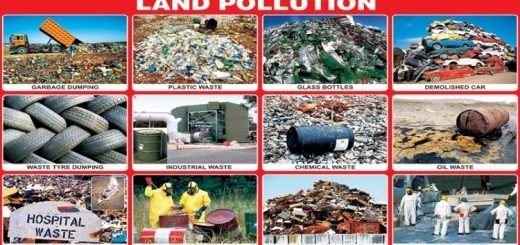Thunderstorms advantages, disadvantages, effects and types
Thunderstorms are small, intense weather systems that make strong winds, heavy rain, lightning, and thunder, They serve to cool the earth, create rainfall, and remove pollution from the air, They are a direct result of atmospheric heating and increased air convection.
What are Thunderstorms?
Thunderstorms are dramatic weather events characterized by lightning and its accompanying sound effect, thunder. They form when warm, moist air rises rapidly creating updrafts within the cloud. Thunderstorms can vary in intensity and duration. Some may be short-lived and mild, while others can produce heavy rain, strong winds, hail, and tornadoes. Thunderstorms typically occur on hot and humid days.
Warm, moist air near the Earth’s surface is less dense than the cooler air above, causing it to rise rapidly due to convection. As the air rises, it cools and condenses into water droplets or ice crystals, forming towering cumulonimbus clouds. Within the cloud, strong updrafts cause collisions between ice crystals and water droplets. This friction separates electrical charges, with positive charges accumulating near the top of the cloud and negative charges near the bottom.
When the electrical charge separation becomes large enough, a sudden discharge of electricity occurs—that’s lightning! It can travel between different parts of the cloud, from cloud to air, or from cloud to ground.
The intense heat from the lightning channel rapidly heats the surrounding air, causing it to expand very quickly. This rapid expansion creates a shockwave that travels outward as thunder. The distance between the lightning and you determines how long it takes for the sound to reach you, explaining the lag between seeing the flash and hearing the boom.
Within the cloud, collisions between water droplets and ice crystals can lead to precipitation in the form of rain, hail, or sleet, depending on the temperature at different levels of the atmosphere.
Thunderstorms advantages
Thunderstorms offer water to the vegetation and also to the lakes and the reservoirs, They happen anywhere with two conditions which are the air near the Earth’s surface must be warm and moist (with lots of liquid), and the atmosphere must be unstable.
The storm winds distribute the seeds and the pollen, they help remove the old and weak vegetation and so they make way for new growth, The lightning strikes liberate nitrates that fertilize the soil, The lightning produces about 20 percent of the nitrogen to the soil per year.
The updrafts and other wind effects remove large amounts of pollution, transporting it aloft, The storm rainfall washes the pollution out of the air, The thunderstorms are very active electrically, and the Lightning is an electrical discharge that happens between two opposite-charged surfaces.
When the lightning strikes, The energy is let out which moves to the air and makes the air spread quickly and send out the sound waves, The thunder is the sound that comes from the rapid spread of air along the lightning strike, The thunder is slower than the lightning because the light is faster than the sound.
Although thunderstorms are dangerous, They are also a great blessing, They can be a great help to man and all living creatures, We get lots of water for many continents during the summer, The rain from the thunderstorms washes away many of these pollutants from the air.
Without the thunderstorms, many continents would become dry, The fish would die, The crops would fail, and the animals would die, They help our earth maintain its electrical balance because the lightning helps transfer the negative charges back to the earth.
The lightning helps fertilize the soil, The heat and the pressure from the lightning turn nitrogen and other gases in the air into useful compounds that are a natural fertilizer that help the plants make vital proteins, and it produces the ozone which is a vital gas in our atmosphere.
Thunderstorms are major contributors to rainfall, especially in regions that rely on them for freshwater supplies. The rain helps fill rivers and lakes, and replenishes groundwater reserves, providing water for drinking, irrigation, and hydropower. Thunderstorms are a crucial part of the hydrological cycle, delivering much-needed precipitation to replenish freshwater reserves. This is vital for areas that rely on rain for agriculture and drinking water.
Lightning acts as a natural air freshener. The electrical discharge from lightning splits nitrogen molecules in the atmosphere, creating nitrogen oxides. These oxides combine with water vapor to form nitric acid, which falls as acid rain (weak compared to industrial pollution). This acidic rain helps remove dust, pollutants, and allergens from the air, leaving it smelling fresh and clean.
Lightning can be good for soil. The high temperatures generated by lightning strikes can convert some nitrogen from the air into a usable form for plants. This fixed nitrogen can be absorbed by plants, acting as a natural fertilizer, and contributing to their growth.
Thunderstorms can help control insect populations. Strong winds and hail can knock down insects and disrupt their breeding cycles. Additionally, the increased moisture can benefit some plant and animal species that thrive in wetter conditions.
Thunderstorms disadvantages
Thunderstorms are dangerous, only about 10% of thunderstorms are thought severe, Severe thunderstorms cause high winds of more than 56 miles per hour (90 km/h), hail, flash floods, tornadoes, and hailstorms damage the crops, damage metal on cars, and they break the windows.
The sudden flash floods that happen because of heavy rains are the biggest reason for weather-related deaths, The lightning that happens with all the thunderstorms makes thousands of forest fires each year, The lightning kills many people, and it injures hundreds of people a year.
The streams and the rivers cannot carry all the water, so they flood, The most severe flash flood makes the water level rise dangerously in the streams, the dry places, or the canyons, The flash floods can make terrible mudslides and they can move very quickly, They can roll big rocks, They tear out the trees, and they destroy the buildings and the bridges.
Thunderstorms can be violent and destructive. Strong winds, hail, and tornadoes can all be associated with thunderstorms, causing damage to property, crops, and infrastructure, and injuring or killing people. Flash floods can occur due to heavy downpours overwhelming drainage systems and causing rivers to overflow, which can be very dangerous and cause loss of life and property damage.
Floods are a major concern during intense thunderstorms, which can be very dangerous and cause rapid rises in water levels in streams and rivers, displacing people and causing economic losses. Lightning strikes can be dangerous and pose a threat to life and property. They can start fires, especially in dry areas, They can damage electrical equipment and infrastructure, and strike people or animals directly.
Thunderstorms can disrupt daily life. Heavy rain can lead to flash floods, making roads impassable. Strong winds can cause power outages and travel delays. Lightning strikes can damage power lines, leading to power outages that can disrupt daily life and essential services. Thunderstorms can disrupt travel by air and road due to heavy rain, low visibility, and strong winds.
How can you keep safe in the storm?
You should stay away from the water because the water conducts electricity, You should not stand on the hilltop, Try not to be the tallest object, If the lightning comes near, try to find shelter in the house, the car, or in the low place under some small trees but not in a shed, inside a house.
You should not use the telephone or any electrical things, You should not take a bath or a shower, You should not look for shelter under a tree, You have to stay away from metal (like the pipes, the fences, and the wire clotheslines), If your hair stands on end while outside, You have to drop to the ground and curl up in a ball-like shape.
You should stay out of low places if there is a flash flood, The cars should not be driven through the water that is flowing over a road or bridge, The flowing water can push a car right off the road or the bridge, It takes two feet of water to float most cars.
The road under the water might have been washed out, leaving a deep hole, The flash flood can easily turn over a car and trap everyone inside, So, if your car stops in the floodwaters, You have to get out as fast as possible and run to higher ground.
You can subscribe to Science Online on YouTube from this link: Science Online
You can download the application on Google Play from this link: Science Online Apps on Google Play
Hurricanes & tropical storms advantages and disadvantages
The Flood advantages and disadvantages
The positive and negative effects of cars
The harmful effects of toxic chemicals in the environment
Air quality index uses, importance (air monitoring data), and ways to estimate air pollutant levels




